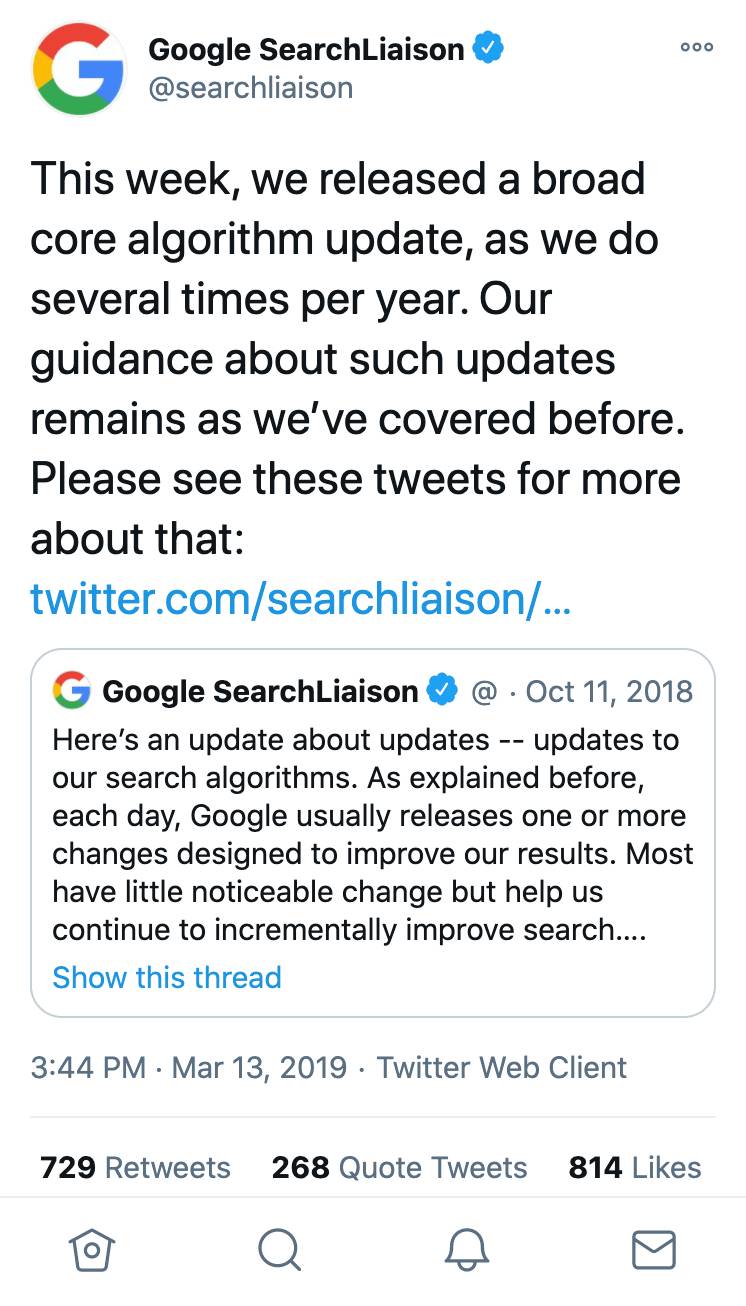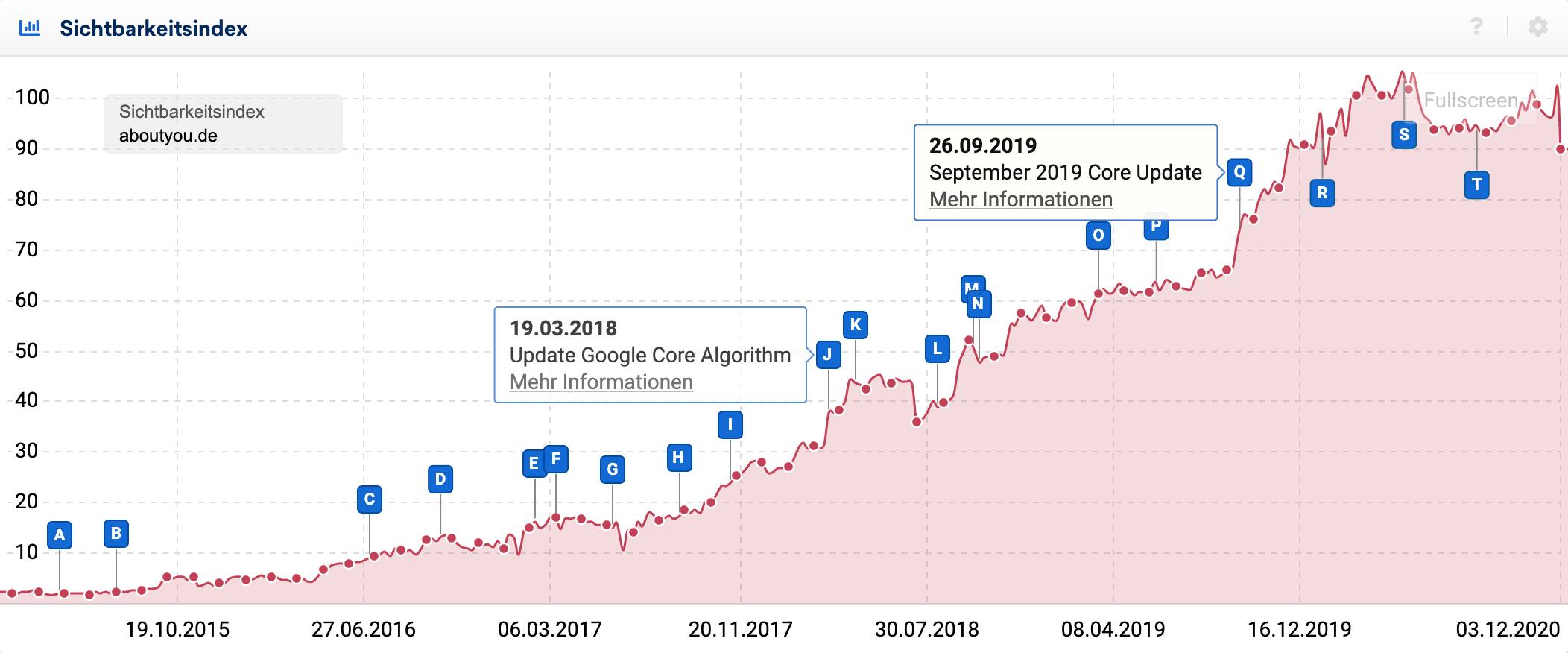Since March 2018, most of the Google updates that we know of have been replaced by regular core updates. While minor algorithm changes are made as part of the Google Everflux, there are major changes that are made a few times a year which are either announced or confirmed by Google: the Google Core Updates.
The precise nature of the changes that are being made is not directly communicated, but a number of hints are provided about the objective of the Core Updates.
Overview of the previous Google Core Updates
The first Core Update was rolled out in March 2018. Initially, it was mistaken for an Unknown Google Update, as many of the pages that had already been affected were once again showing major fluctuations in performance.
A little later, however, Google confirmed the Core Update on the Twitter account @SearchLiaison:

In September 2018, another, much smaller, Core Update was to be rolled out. However, the core update did not gain real attention until the rollout in March 2019, about a year after the first core update. ‘Your money or your life’ (YMYL) domains were particularly affected, as were pharmaceutical and medical sites.
However, with the following updates in June and September, the affected domains became more diverse. This is a trend that continued in January and May 2020. While in the early Core Updates it was mainly large, well-known sites that were affected, smaller and less well-known sites are increasingly seeing fluctuations in performance as a result of these updates.
We curate a complete list of all updates, including smaller and more targeted updates.
Is my website affected by the Core Update?
Whether a website is affected by an update can be easily tested on our Google Updates Tool. Strong fluctuations in the time-range covered by the update are a relatively sure indication that the update has affected the domain.

We also highlight any relevant updates on the domain Visibility Index graph where changes correspond to updates that we have recorded.
In addition, we offer the Google Update Radar which reflects overall volume of changes on SERPs on a daily basis.
In the medium to long term, such updates can also be seen in organic traffic data, e.g., in Google Analytics or Search Console. If important keywords suddenly no longer bring in traffic, a penalty arising from a core update should be considered as the reason.
Possible reasons for a penalty
Iin the early years of the Core Update, when it was not clear which factors the update would take into account, Google published the article “What webmasters should know about Google’s core updates” in the Webmaster Blog at the end of 2019, thereby providing some clues.
Firstly, it refers to the webmaster guidelines and the E-A-T principle:
- Expertise: how trustworthy is the content? High-quality and relevant content is preferred by Google (probably the most important signal in the EAT principle).
- Authority: Am I better than the competition? External linking can also play a role here.
- Trust: A strong brand and high domain age are evaluated positively here.
But the search quality guidelines are also mentioned as a basis in the article. Experts also see factors such as user signals (CTR, bounce rate, etc.) as well as the refinement of Google AI (machine learning), which are not mentioned directly, but which make the quality features mentioned “measurable”.
Get out of the visibility valley with these tips
Overall, the following applies: quality before quantity. You should thoroughly analyse the content of your website and avoid bad content. But technical issues such as duplicate content, keyword cannibalisation and page load times can also have a direct or indirect influence and should, therefore, also be checked.
The following steps can help to identify content-related weaknesses with regard to the Core Update:
- Comparison with the Quality Rater Guidelines: does the website content comply with Google’s specifications? More information here.
- The E-A-T principle: Can I further improve the individual areas, e.g. through advertising or new content? Do I need to revise old content? More information and video presentation.
- User signals: Understanding and serving the search intent of visitors is and remains important in order to optimise CTR and bounce rate. We have an article for you on identifying search intent.
In our ask-sistrix reference librabry for SEOs you can read more about High Performance Content Formats and the full list of historial updates from Google.